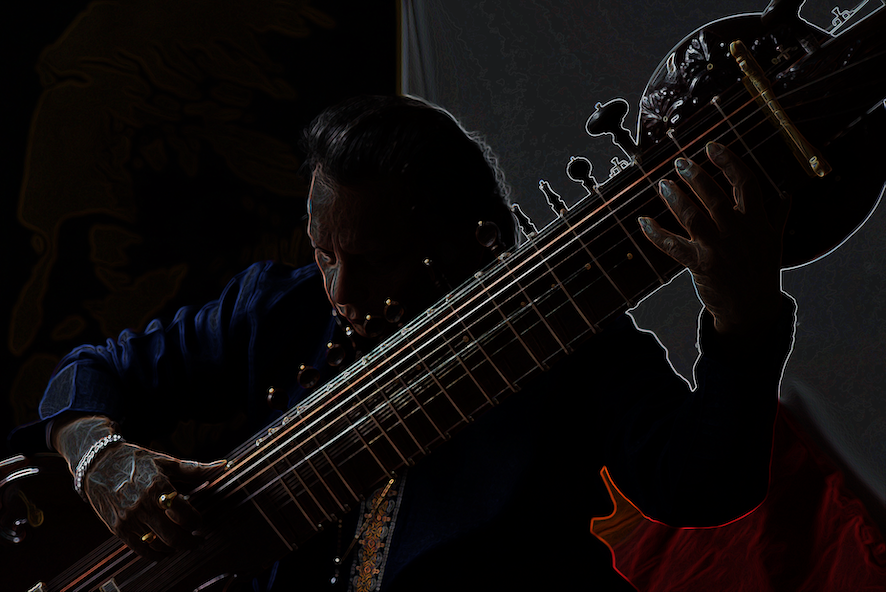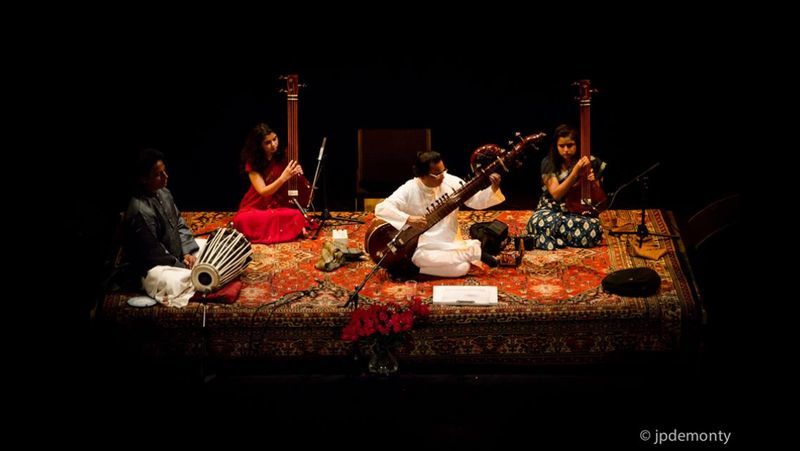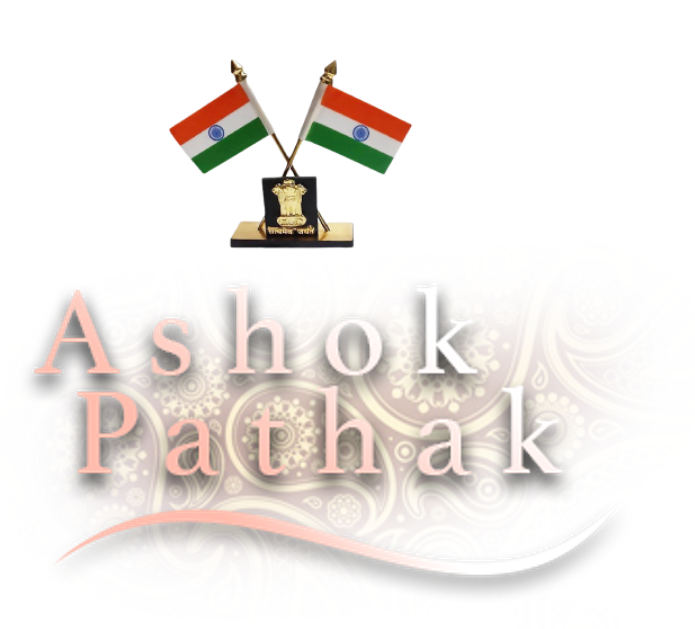
Surbahar in Dhrupad style
Besides a being gifted Sitar player, Pandit Ashok Pathak also masters the Surbahar. This double base Sitar includes three extra strings for the lower octaves and is used in the Dhrupad style.In a Surbahar recital Panditji plays together with a Pakhawaj, a style that is rarely found, but highly appreciated by the audience.

Traditional Dhrupad style and the pakhawaj

In the 18th century all string instruments in India were called Vina. In North India there are four kinds of Vinas: Vichitra-vina, Rudra-vina, Kachpi-vina (nowadays know as surbahar) and Saraswati-vina (nowadays know as sitar). The Rudra-vina and the Vichitra-vina are used in the dhrupad style, but sitar players preferred to play the Kachpi-vina, because the playing technique is very similar to the playing technique of the sitar.
About the Surbahar (Kachpi-vina)
The surbahar is played with a plectrum and has seven to eight main strings and eleven sympathetic strings. The surbahar neck is made of teak wood and always has a special face on the top, like the head of a swan, a crocodile or a bird. The resonance box is made of a pumpkin, which is flat in the shape of a turtle.
The surbahar is one of the best North-Indian instruments to play ragas in the Dhrupad style with long Meends and perfect Shruti, Alap, Jor, Gamak, Tar-Paran, Thok-jhala and Jhala. It has a particular pitch and a great bass sound because of the Laraj and Kharaj strings (double bass strings). The temperament or character of the surbahar, played in Pathak Gharana, sounds like the vina.

granfather’s
Surbahar
The real charm, sweetness and beauty of the sitar and surbahar sound is to be found in the meend technique, an ornamentation provided by bending notes with the fretting hand, and in the resonance of the tarab strings which always provide a feeling of deep emotion to the listeners.
In the 18th century most of the sitar players used to play surbahar as well as sitar, so they always travelled with both instruments; their surbahar for Alap, Jor, Jhala and their sitar for Gat, Bandish, Bol, Tan, Thumri and Dadra.
In the Pathak Gharana Pt. Rajkumar Pathak (grandfather of Rameshwar Pathak) started playing the Dhrupad style surbahar because of its great quality in Alap, Jor and Jhala.
Pt. Rameshwar Pathak, Pt. Ramgovind Pathak and Pt. Balaram Pathak, further perfected this style, while Pt. Balaram Pathak developed the meend technique further to the range of seven till eight notes on one fret, which is an extreem difficult technique. Beside that he also put two extra frets, komal R and M.
Pt. Rameshwar Pathak performed all over India and became the court musician of the State of Darbhanga, in North Bihar, because of his exquisite talent in both sitar and surbahar. Around the same time Pt. Ramgovind Pathak became the court musician of Kasim Bazar in West Bengal. As a gift from the Maharaja he received a surbahar made by the famous surbahar builder Kanhai Lal. This surbahar was also used by Pt. Balaram Pathak and is still in use untill today by Pt. Ashok Pathak.
The traditional discipline to play the sitar and surbahar in the correct Asanas (sitting postures) is invented by the pandits of the Pathak Gharana. For sitar the Pathak Gharana musicians and disciples always use the Saraswati-Asana and for the surbahar the ArdhBajra-Asana or Bajra-Asana. Tabla and Pakhawaj players always use to sit in Sukh-Asana.
Since the 18th century a traditional Dhrupad surbahar and sitar performance in the Pathak Gharana is always accompanied by the Pakhawaj, one of the first percussion instruments in Indian Classical Music. The pahawaj has a bass sound because it is played with the full palm of the hand and not only with the fingers, like the tabla. Most of the bols (language) of the Pakhawaj and Tabla are the same but the playing techniques are different.
